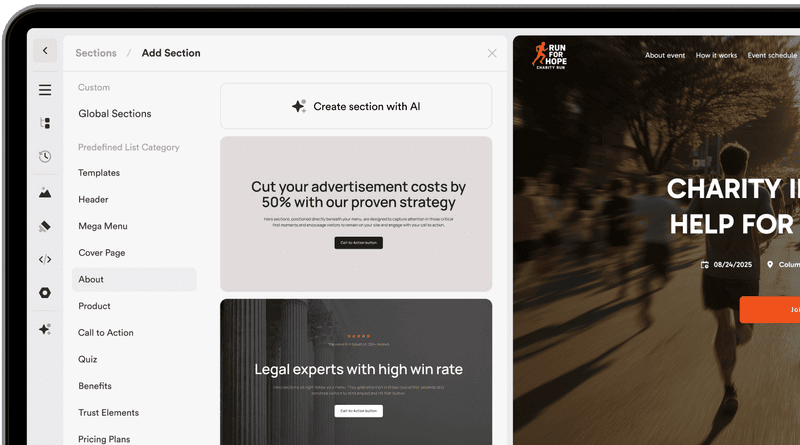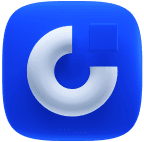November 30, 2021
How to write compelling website copy?
Learn how to write compelling website copy
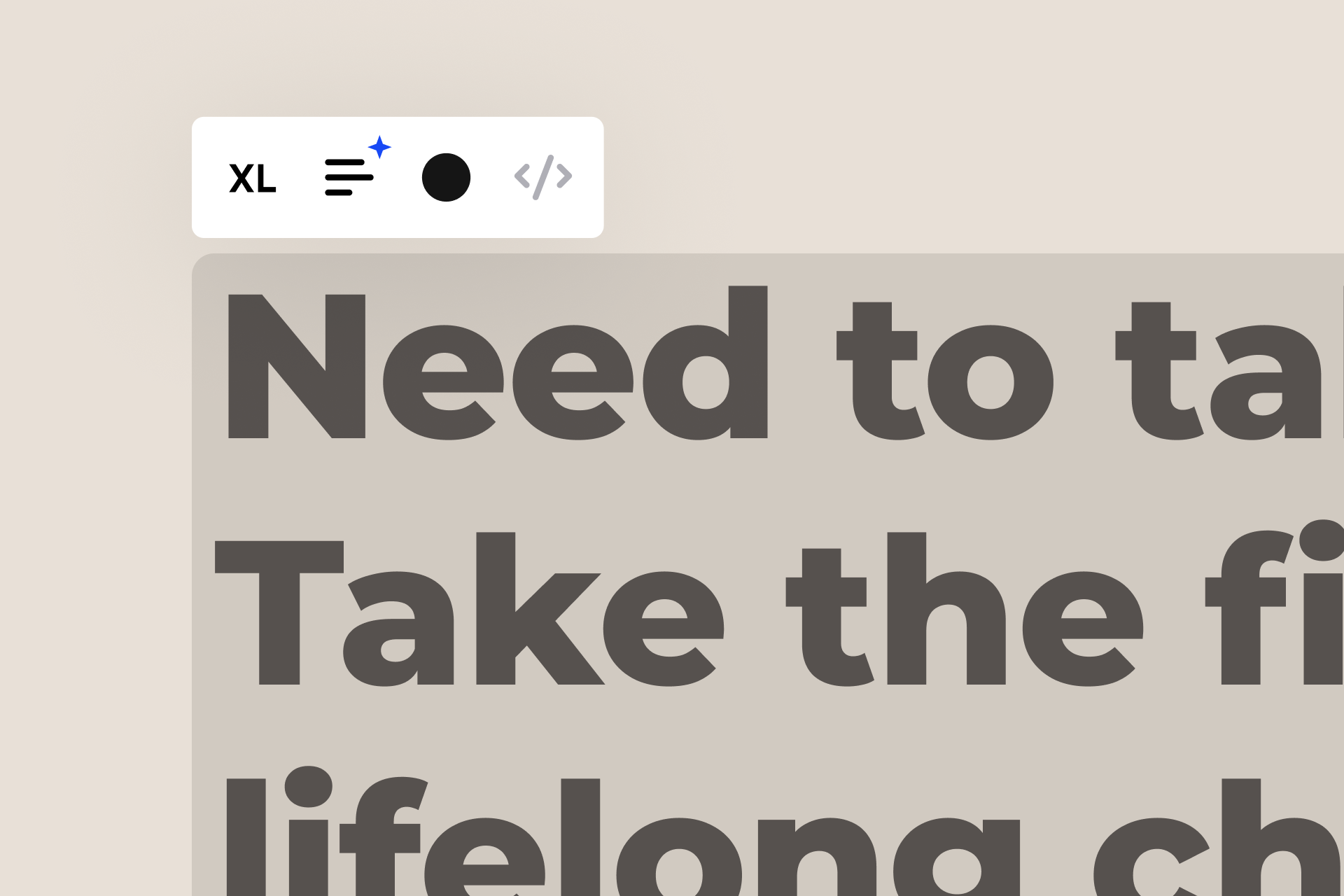
How to write compelling website copy?
By following these simple tips, you will write conversion-boosting copy for your website, homepage, or landing page.
The positive first: You don't have to be a professional copywriter to write compelling sales copy. By using a few helpful tips, you'll already be able to write compelling website copy yourself.
But why is it essential to write good website copy?
The Internet is "stuffed" with information and many useless things, with new content being added daily. Internet users, therefore, only roughly sift through the flood of information and try to filter out the most important information for themselves. Luckily, there are helpful strategies to help you stand out despite the clutter of content. We'll teach you exactly how to get there in 10 easy steps.
Step 1: It all starts with the headline
The headline is the most important element of your website. It is the first thing visitors see when they visit. After that, they decide whether to close the tab or continue reading. Therefore, the first impression should be convincing. For a successful website copy, the headline, the subheading, and the other elements must form a harmonious picture.
5 tips to make your headline a success!
- Involve your readers: Actively involve your readers. Use targeted questioning techniques to convey that your website visitors have a say and that their opinion is important. Example: "What would you spend your money on?"
- Incorporate interesting words:*Interesting sounding words and adjectives arouse curiosity in the reader. These make the headline and, of course, the rest of your website copy more specific. However, make sure you limit yourself to 1-2 adjectives. Otherwise, it can quickly seem "cluttered".
- Stick to the 5W1H: Almost every professional copywriter knows the 5W1H questions. Who? What? When? Where? Why? How? Use these questions for your website copy. They embody an indirect promise and encourage people to read on.
- Address your readers directly: Unfortunately, it is still too common to see that website copy does not use personal salutations. Therefore, use the direct address in your copy - YOU. After all, when creating the copy, you have your customer's image in mind and write it just for them.
- Meet expectations: Users visit your homepage for different reasons. For example, they followed an online ad because they were promised something there. Fulfill this expectation in the first headline. This reduces the percentage of users who close the tab again.
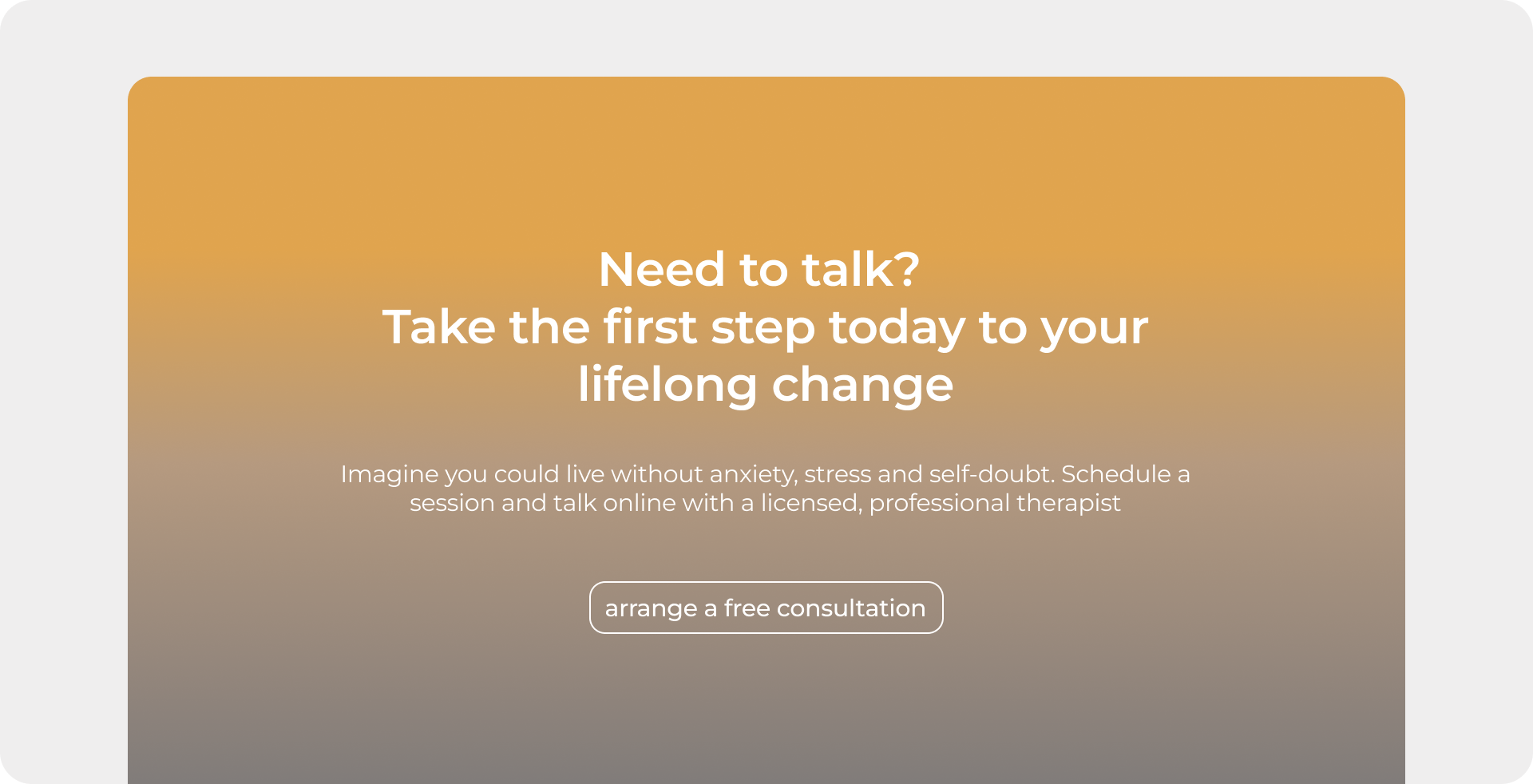
Are you still unsure? Then try formulating a headline with one of these 3 formulas:
- Do what you love without negative emotion / surprising action. Example: "Take the trip you've always dreamed of without having to worry about the money."
- Product name is a product category, the USP of the product. Example: "Onepage is a landing page software that lets you create a page without any prior marketing knowledge."
- Specific number ways to do something/result. Example: "7 ways to make more money."
Hint: You don't just want to write great website copy, but you also want to learn how to create your own landing page in just 5 steps? Just click on the link and check out our article on the topic.
Step 2: Subheadings - An important component in good website copy.
Way too often, they are not given enough significance - the subheadings! Yet they're not only a great way to add structure to website copy but also to support the promotional message. Use the subheading to motivate your readers to keep scrolling.
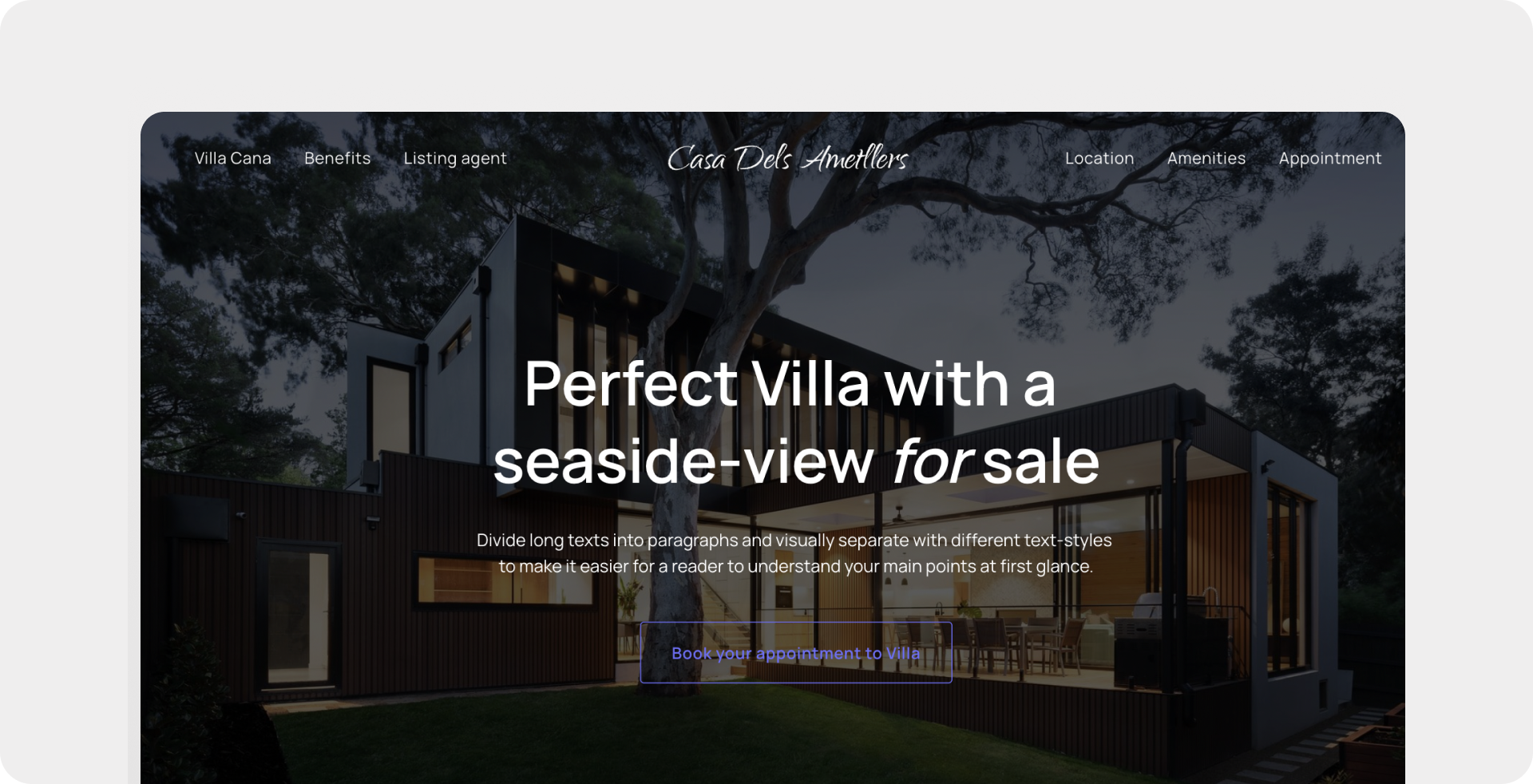
A subheading "loosens up" your website copy and gives the reader a hint of what to expect next.
But how to make sure your website's subhead succeeds?
Basically, it's quite simple. You can consider all aspects as you would with a normal headline. It is especially important that your subheading also contains a benefit for the reader. What does the reader get out of your website copy? What is the added value for them?
Step 3: How to score big with the "About Us" section!
Yes, the "About Us" page is important! But why is that? Customers like to feel a personal relationship before they buy something. That's why, according to statistics, the "About Us" page is the second most visited after the homepage. In good copy, you should use the "About Us" section to convey a feeling of trust and transparency.
3 building blocks for your successful company introduction:
- Show your face: Introduce yourself and your team with photos
- The founding story: Tell something about your company's past in your website copy. Why did you start? How did you get to where you are now?
- What drives you?: Tell them what motivates you to keep going every day. What is your company's purpose?
Unfortunately, it is still too common to see company introductions that summarize the entire company in 2-3 short sentences. Where the same description could also apply to 5 other randomly picked companies. This is not a very effective way for you to stand out with your business. Take the time to build a personal connection with the customer through a personal introduction in this website copy. For this very reason, you should avoid using stock photos. Instead, use "real" images and show who the face behind the brand is.
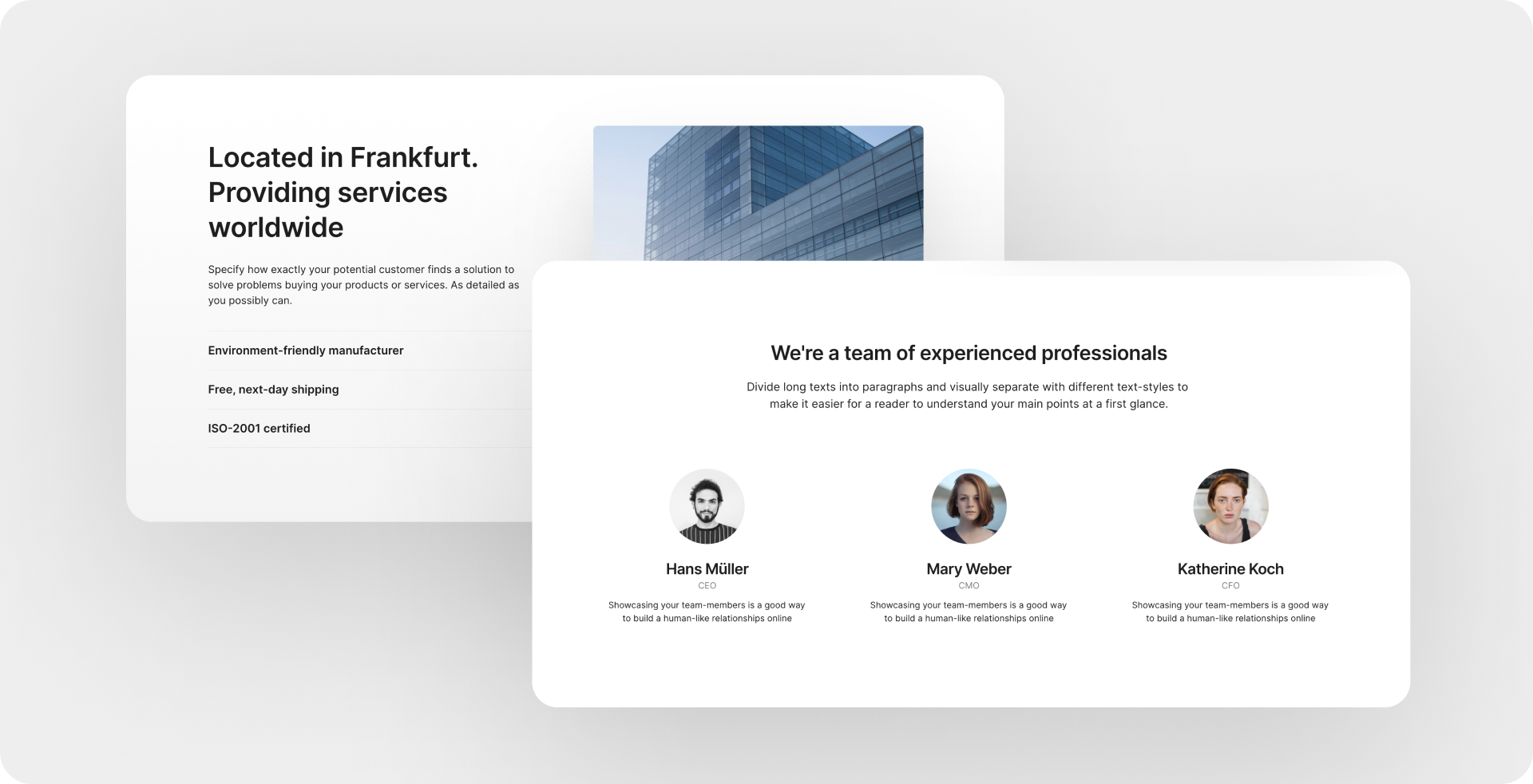
Step 4: How to set up your offer
An offer is a unique concrete promise to your customer to solve their problem or at least help them do so. A great offer can help double or even triple your leads. The reason for this is that your offer and the conversion rate are interdependent.
The more direct and expensive your offer is, the fewer conversions you'll get! That's why it's important to understand what type of offer you can use for what purposes. As an example, I've brought two different types of offers for you to use in your website copy:
Free offers:
People love free stuff. With a free offer, your conversion rate will most likely go through the roof. So by creating successful website copy, you can achieve a lot.
- Free quotes (service)
- Freebies (PDF, e-book)
- Free consultations
Time-limited offers:
When you have a limited-time offer, it can create a stimulating effect. The time limit makes it clear that your customer should act immediately to buy your product.
- A bonus that is limited in time
- A special service that is offered for a limited time only
- Discounts
What else should be considered?
When formulating your sales offer for your website, make sure that you write it in an understandable and friendly way. Therefore, avoid "Officialese" language. It is also important for you to emphasize the benefits for your customer. Make it clear what advantages your potential customer will gain from your offer. Especially for landing pages, the following applies: Keep it short and to the point. For homepage or website copy, on the other hand, feel free to add a bit more text than you would on a landing page.
Step 5: Insider tip for good website copy:
Translate features into benefits
Now I'm going to tell you about a real game-changer! Most product features are not well understood by your site visitors. They lack the necessary background knowledge to recognize the benefit for themselves. But there is a solution through successful website copy: Translate product features into benefits.
How does this work?
To give you a better idea of what this can look like, I'll show you 5 examples:
The goal of this method is to better understand and respond to the customer and his needs. This gives you the chance to convey real customer benefits on your website. Always ask yourself, what exactly does this product feature mean for my customer? What advantage does it give them? These advantages then belong to your website copy.
Another secret tip for great website copy is to use storytelling. You can learn how best to use this and what to look out for in our blog article "10 rules for digital storytelling".
Step 6: Objection handling
A great way to ease your customers' uncertainties with the help of your website copy is to anticipate objections. You can include an FAQ section on your website to list the most common questions/concerns and the associated answers.
Two concerns from prospective insurance customers might be:
- Which services are not covered?
- Are there any hidden costs?
Possible concerns from prospective students of an online course:
- Is the course limited to certain times?
- When will I have access to the course?
- What content can I expect?
Think about potential questions related to your product. Be brief and concise, but also sensitive in your answers. After all, your goal is to get the reader to want to buy your product. Put yourself in your customer's shoes and give an answer that really helps them. An FAQ section is a great way to improve your website copy.
Step 7: Strong website copy needs a strong call-to-action button.
Without appropriate buttons, we couldn't even talk about conversion on a website. So, it is crucial for success to place appropriate CTA buttons on the page.
A CTA is a direct call to action to the customer to perform a certain action on your website. Typical examples are:
- Share your content
- Sign up for a seminar
- Following you on your social media channels
- Downloading your e-book
- Schedule a call
To make the call to action work, here are 3 simple rules for writing copy for these buttons on your website:
- Start with a simple verb in the imperative (Sign up now) or present tense (How it is done right)
- Use a personal address to build a bond with your target audience (You)
- Beschreibe die Handlung, die der Nutzer auf deiner Website durchführen soll (Click here to schedule a consultation)
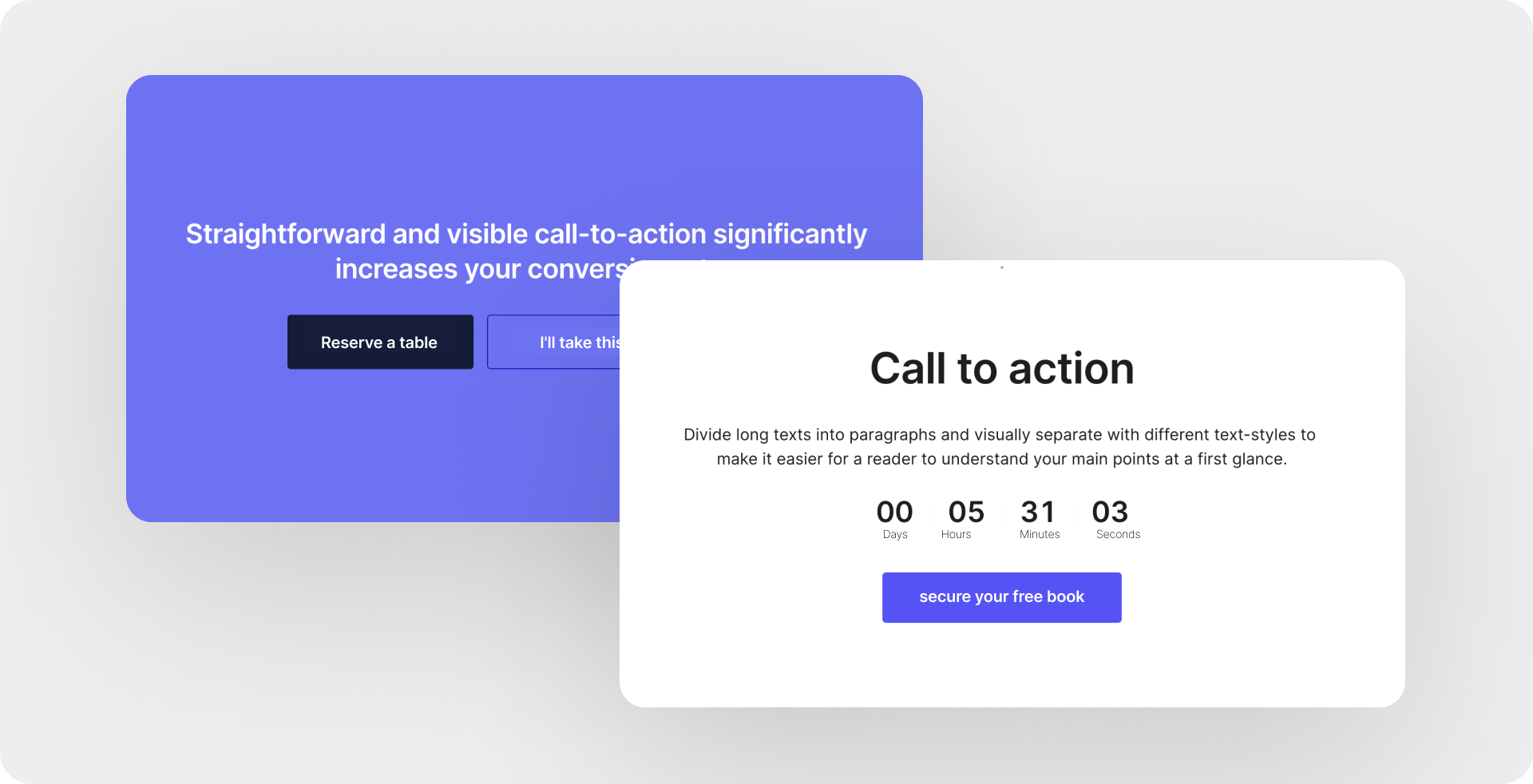
As a general rule, the call to action always comes at the end of a website copy. Therefore, the hierarchical order is as follows: Headline, subheading, body, call to action/ CTA button.
Step 8: Time to talk about facts
People like facts! It stimulates the rational need for information and helps in decision-making. When skimming your website copy, your visitors store relevant facts.
Therefore, in one section of your website/landing page, use 2-3 relevant figures about your product. It is a good idea to display these numbers in larger font sizes. Then the visitor will notice them right away. Using facts and figures makes you appear as an expert who knows exactly about his business. This contributes to trust and strengthens customer loyalty. Facts and figures are a suitable tool for successful website copy.
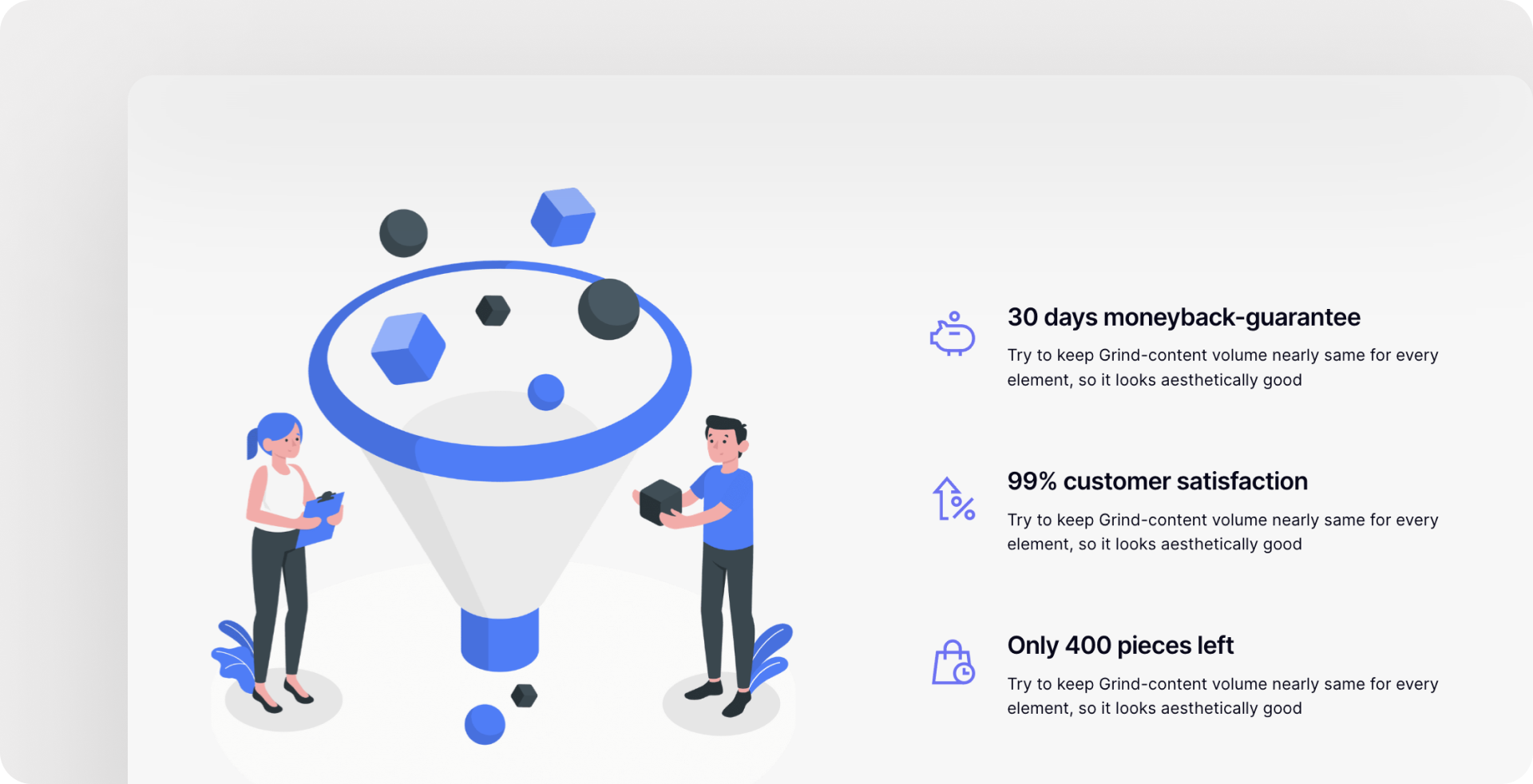
Step 9: Don't forget SEO!
Do you want your website to appear at the top of search engines? Then pay attention! With only a few adjustments, your website copy can be optimized to rank high in search queries. The "magic word" behind this is SEO (Search Engine Optimization).
How does SEO optimization work?
First of all, you should research the relevant keywords for your business, product, or service. The Internet offers many free tools for this very purpose. But you can also simply think about the terms your potential buyers are likely to search for. List everything you can think of.
You should then incorporate your researched keywords into your website copy. The headlines and subheadings are also ideal for this purpose.
Important: It is much more relevant than the content of your website copy is "unique" and relevant to your target group. Keywords should be used "naturally," and in case of doubt, it is better to follow the motto "less is more".
Step 10: The footer
As they say: "The last impression stays". In the last section on your website, it is especially relevant to place a call to action for your visitors.
Remember that any call to action must have a clear benefit that visitors will receive in return for clicking a button. So it's the carefully chosen words, not the punctuation (such as an exclamation point), that will elicit the visitor's emotional response and desired action on your website.
Important contact information, such as any social media links or contact forms, also comes in handy in the last paragraph of your website copy.
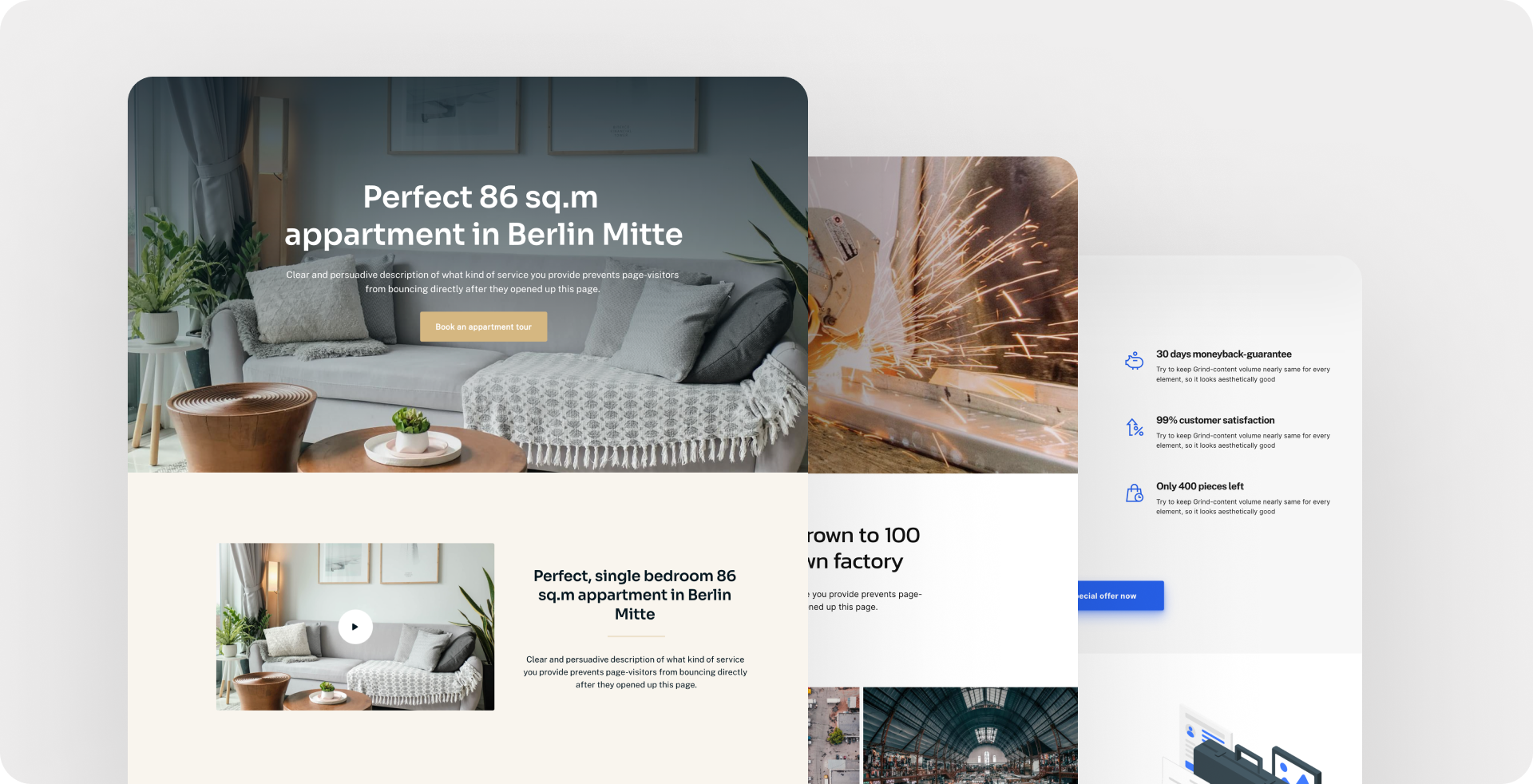
Now you've been given all the important tools for writing effective copy for your website. Use the knowledge you gained today to generate more leads and sales for your business.
One way to create your own site for free is to use Onepage.
No matter if your company already has several websites and landing pages in place or not. No other software solution lets you create a high-quality site as quickly and easily as Onepage does.
We look forward to welcoming you to the Onepage family!
Start with
Onepage for free.
It’s fast and enjoyable
Onepage is free to use. It’s not a trial version.
No credit card is required

